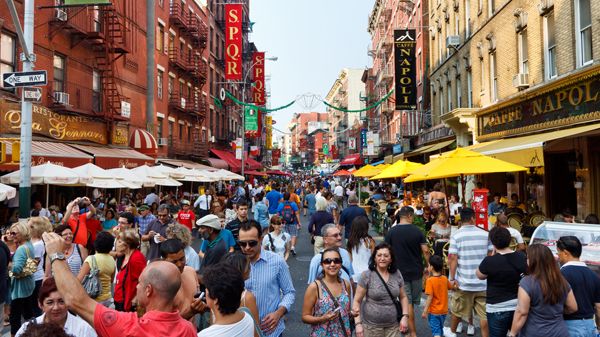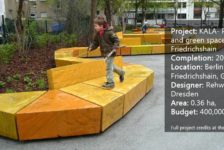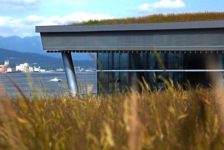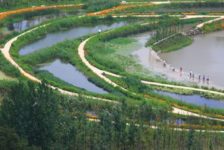This article is about the unsung side of landscape, which does not always translate into a glamour shot or critical praise. This isn’t about starchitect archiporn, its about all those smaller interventions that when added up makes the real city, which people inhabit. It is in these interventions where we look to the landscape for something more than aesthetic design. It is where we the people seek something in return. We all know that in many ways society — especially affluent society– is prone to being unwell. I don’t have to tell you about diet, substance abuse, obesity, Type 2 diabetes, mental illness, and social isolation, because chances are if you subscribe to LAN you probably know these facts. The big question is, what do we do about it? The Urban Land Institute (ULI) recently released a report called Building Healthy Places to promote discourse and action in the area of public health through public space. This article takes the 10 points set out by the report and evaluates them in the hope that it may provoke and promote thought about this very important discourse. 1. Put people first
This seems like an obvious statement; however, there are several factors that prevent this. First, much of our urban spaces are development driven. Construction costs money and retail is often given preference over non-commercial entities. Although commerce such as hospitality can activate space, it is up to designers to push for non-commercial spaces that allow people to gather without the need for commerce. William H Whyte’s The Social Life of Small Urban Spaces is an interesting look at people and space and may be a good place to start. Note that even when commerce is regarded as a positive, it is provided as the lowest cost — such as a street vendor or a busker over an expensive cafe or festival. 2. Recognize economic value Under many development models, a return is usually sought directly from an investment with little consideration to the urban value outside that investment. The sum of the parts is not greater than the whole. There is a remarkable productivity value from a healthy population, as well as the potential for huge savings in health care spending. 3. Empower champions for health It’s easy to throw around the word community under this point; however, here’s another word, which I think works as well. This word is subculture. Outside blood ties and school networks lie our personal interests and the way they are manifested into group identity. Many activities create these subcultures, which are generally quite enthusiastic about their lifestyle choices and will rally behind anyone who is looking to facilitate a part of their identity and life in public space. These people are the support you might need to create that active space. They can provide influence through power of the people. You may be surprised how compelling a little enthusiastic support can be. 4. Energize shared spaces Everything is linked with energy; any Star Wars geek can tell you that. Energy, however, can become stagnant if not replenished with other energies; any hippie can tell you that. Creating spaces with multiple programs and variable programs is important to consider when creating healthy public space. Seeking opportunities to direct flows to the entire public realm, such as back streets and forgotten corners to create activity enriches and broadens possibilities. 5. Make healthy choices easy I think we have ourselves to blame for this one. If we all were not so eager to sue, could you imagine the amount of amazing things we could have in urban space? Liability is one of the largest preventers of active space, as no one wants to get sued. It seems that in many cases, authorities would rather have a heart attack than provide a healthy lifestyle choice that may result in a twisted ankle and a lawsuit. While some countries are very progressive about this topic, many are not. We need to promote active choices within society today and cater accordingly to encourage all people to engage in activity. 6. Ensure equitable access Life is expensive and people do not always have the money for commercially driven activity. This may go back to the economic development model, which shapes much of our cities. The people who need healthy public space options the most are those on low and fixed incomes. Groups such as the elderly need to be targeted by designers as a prime opportunity. The elderly are often not the greatest spenders and are overlooked. However, adult playgrounds are a tremendous example of catering to this group of deserving citizens. 7. Mix it up Ask any ecologist. An interesting ecosystem is a diverse ecosystem. This also applies to cultural and social ecosystems. It’s probably when somewhere like Brunswick is more interesting than somewhere like Toorak and why gentrification is annoying and destructive to the growth of activity and culture. Mix it up! Enough said. 8. Embrace unique character I’m not sure what to make of this point outside of taking risks, but risks don’t win jobs unless you’re already quite proven or have nothing to lose. Risks sometime suck, which is why they are called risks. I really don’t know what unique character is. It’s like, what’s alternative music? Next. 9. Promote access to healthy food There’s got to be more to this than providing fresh fruit over hamburgers. Once again, it comes back to development models driven by direct returns of investment. Access to healthy food directly relates to the ability to serve or sell healthy food. If there’s nothing available but hamburgers and unwholesome options, chances are you might end up eating unhealthy. 10. Make it active At the end of the day, if you want to sit on your butt, watch David Letterman, and get fat, it’s your choice. However, if you do not wish to do this, then active choices must be available and appealing. Accessibility is the key. Relevance is crucial. They teach us this in first year, but it really doesn’t make sense until you see another sad, obese kid sitting around with nothing to do, not giving an SFA about DS. Public space is a potential frontline against the burden of disease and the promotion of public health. Two barriers to this are development models where the value of a project is directly assessed by its capital return and the threat of liability. It’s not all grim; there are some great ideas and innovations popping up every day, and people continually find ways around the system. I’d like to think most landscape architects have good intentions at heart and it is only economics that ultimately prevents these intentions from becoming reality. 10 Principles for Building Healthy Places is a great initiative that will hopefully spawn lots of debate and action. This article is my opinion on the subject, but the more important question is, what do you have to say about this topic? Article written by Stuart Beekmeyer Published in BlogLogin
Lost Password
Register
If this is your first time on the new site, please click "Forgot your password?". Follow the steps to reset your password. It may be the same as your old one.











